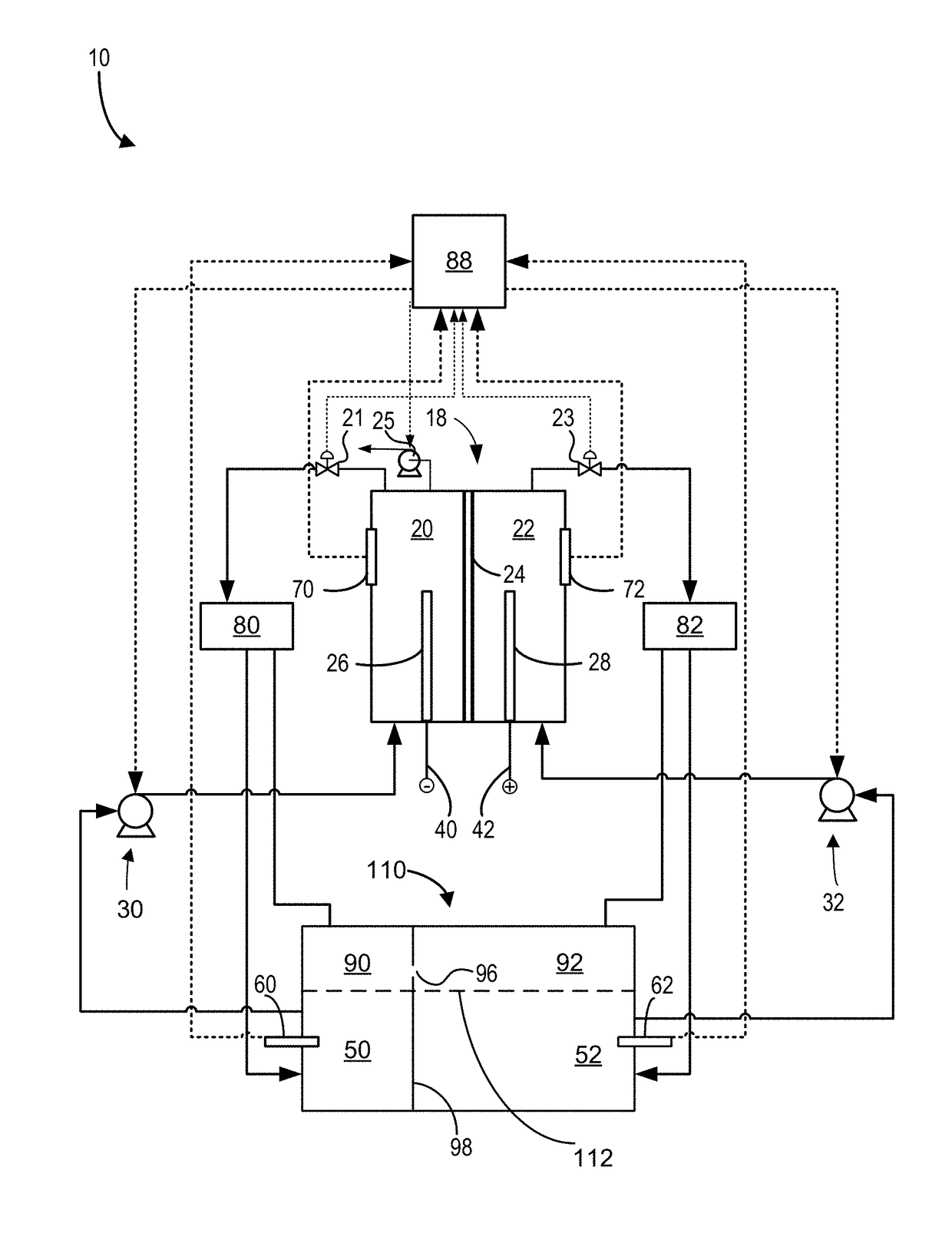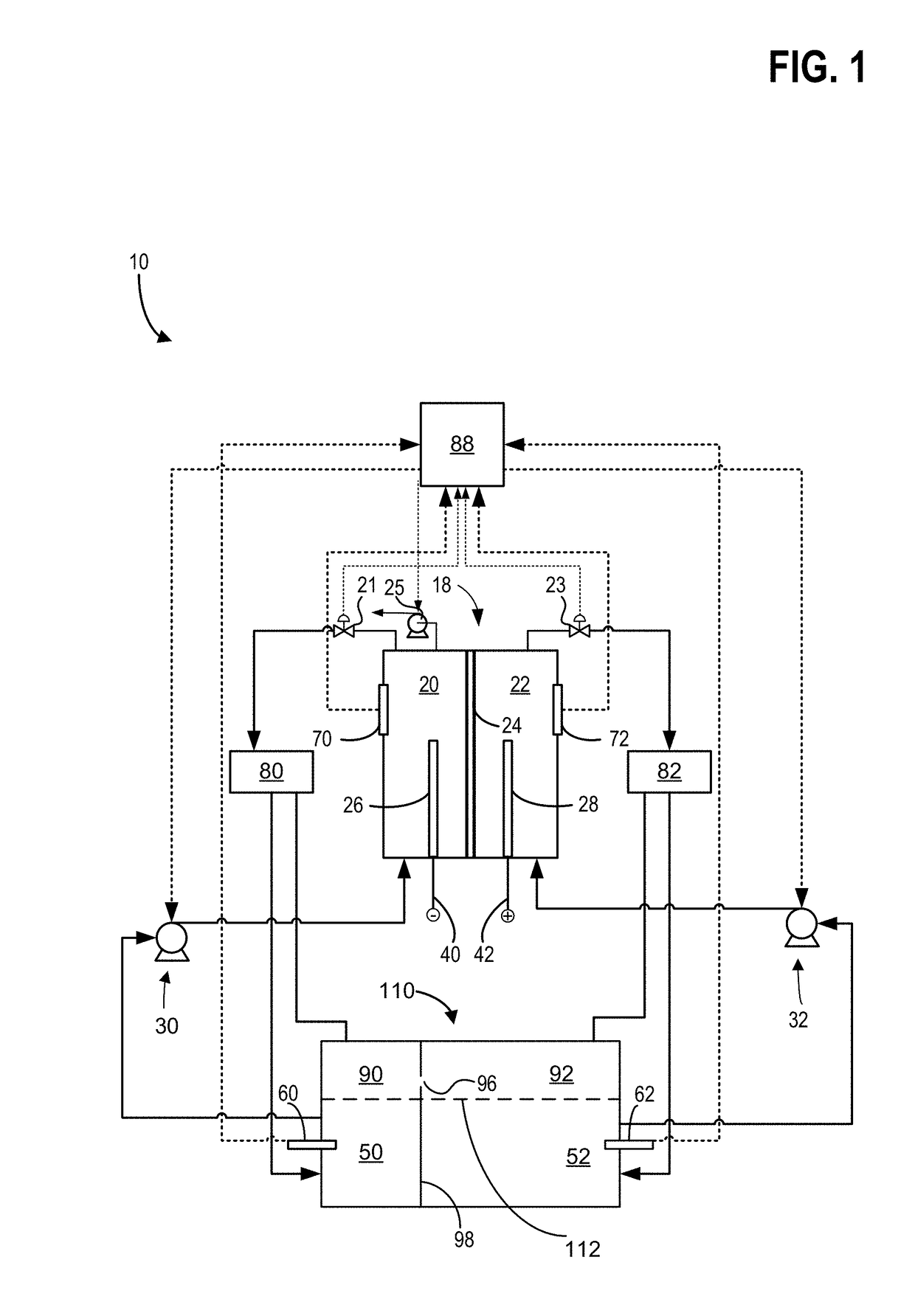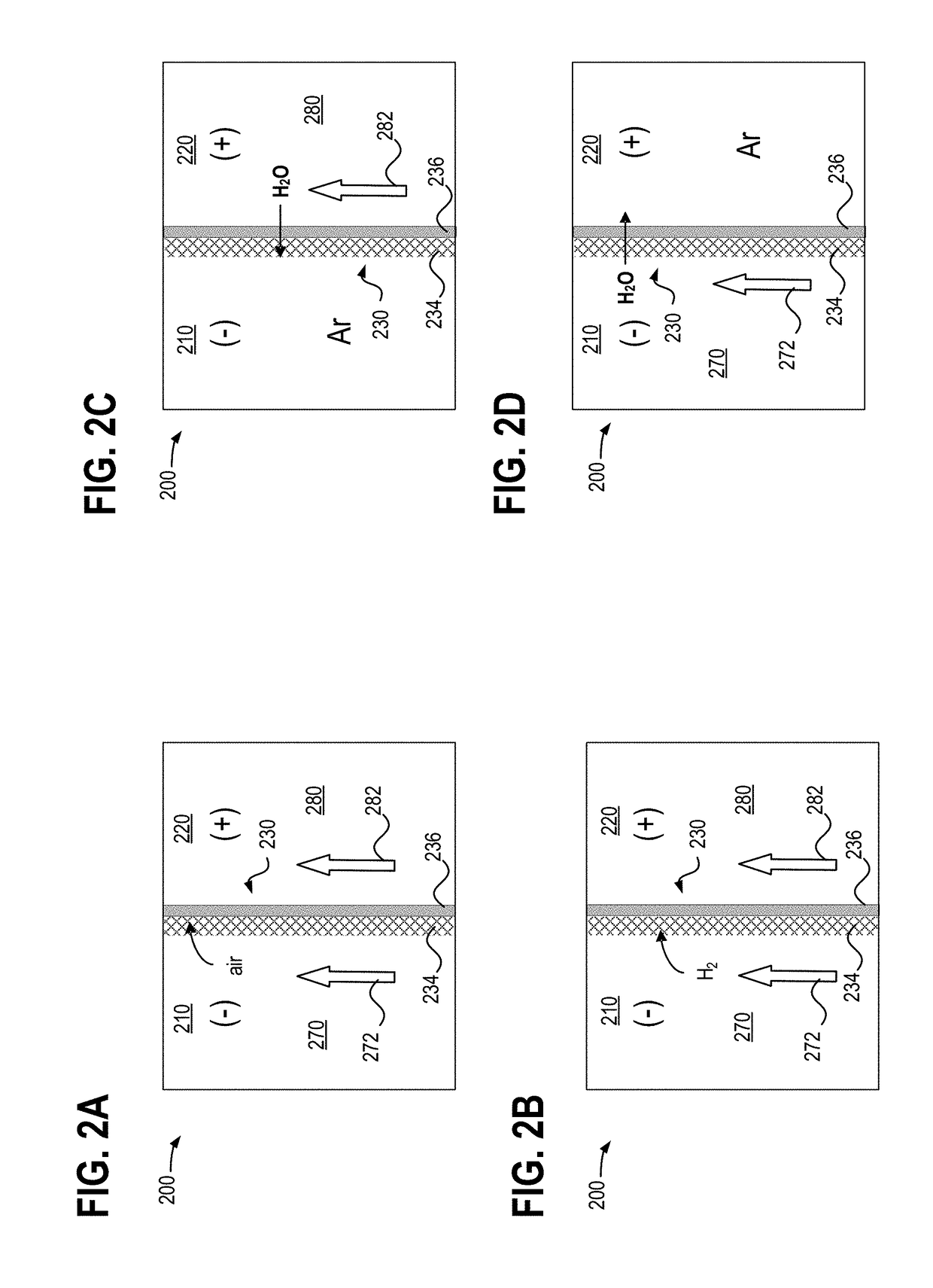Methods and systems for operating a redox flow battery system
battery system technology, applied in the direction of reactant parameter control, regenerative fuel cells, fuel cells, etc., can solve the problems of poor ion selectivity, lower overall efficiency of a redox flow battery, high resistivity and higher cost, etc., to achieve higher ion selectivity, reduce performance losses, and improve the effect of efficiency
- Summary
- Abstract
- Description
- Claims
- Application Information
AI Technical Summary
Benefits of technology
Problems solved by technology
Method used
Image
Examples
Embodiment Construction
[0015]Hybrid redox flow batteries are redox flow batteries that are characterized by the deposition of one or more of the electro-active materials as a solid layer on an electrode. Hybrid redox flow batteries may, for instance, include a chemical that plates via an electrochemical reaction as a solid on a substrate throughout the battery charge process. During battery discharge, the plated species may ionize via an electrochemical reaction, becoming soluble in the electrolyte. In hybrid battery systems, the charge capacity (e.g., amount of energy stored) of the redox battery may be limited by the amount of metal plated during battery charge and may accordingly depend on the efficiency of the plating system as well as the available volume and surface area available for plating.
[0016]In a redox flow battery system the negative electrode 26 may be referred to as the plating electrode and the positive electrode 28 may be referred to as the redox electrode. The negative electrolyte withi...
PUM
| Property | Measurement | Unit |
|---|---|---|
| threshold cross-over pressure | aaaaa | aaaaa |
| resistance | aaaaa | aaaaa |
| pressure | aaaaa | aaaaa |
Abstract
Description
Claims
Application Information
 Login to View More
Login to View More - R&D
- Intellectual Property
- Life Sciences
- Materials
- Tech Scout
- Unparalleled Data Quality
- Higher Quality Content
- 60% Fewer Hallucinations
Browse by: Latest US Patents, China's latest patents, Technical Efficacy Thesaurus, Application Domain, Technology Topic, Popular Technical Reports.
© 2025 PatSnap. All rights reserved.Legal|Privacy policy|Modern Slavery Act Transparency Statement|Sitemap|About US| Contact US: help@patsnap.com



